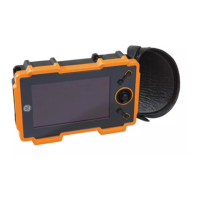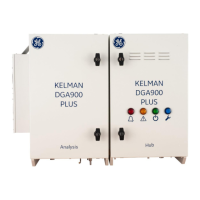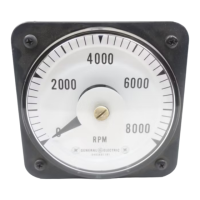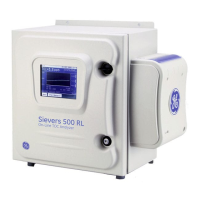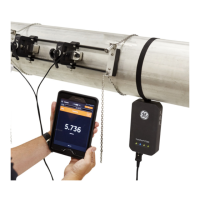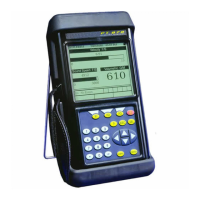Krautkramer USM 35X Issue 01, 04/2005 1-5
IntroductionImportant information on ultrasonic testing
Limits of testing
The information obtained from ultrasonic tests only
refers to those parts of the test object which are
covered by the sound beam of the probe used.
Any conclusions from the tested parts to be applied to
the untested parts of the test object should be made
with extreme caution.
Such conclusions are generally only possible in cases
where extensive experience and proven methods of
statistical data acquisition are available.
The sound beam can be completely reflected from
boundary surfaces within the test object so that flaws
and reflection points lying deeper remain undetected. It
is therefore important to make sure that all areas to be
tested in the test object are covered by the sound beam.
Ultrasonic wall thickness measurement
All ultrasonic wall thickness measurements are based
on a time-of-flight measurement. Accurate measure-
ment results require a constant sound velocity in the
test object. In test objects made of steel, even with
varying alloying constituents, this condition is mostly
fulfilled. The variation in sound velocity is so slight that
it is only of importance for high-precision measure-
ments. In other materials, e.g. nonferrous metals or
plastics, the sound velocity variations may be even
larger and thus affect the measuring accuracy.
Effect of the test object’s material
If the test object’s material is not homogeneous, the
sound may propagate at different sound velocities in
different parts of the test objects. An average sound
velocity should then be taken into account for the range
calibration. This is achieved by means of a reference
block whose sound velocity corresponds to the average
sound velocity of the test object.
If substantial sound velocity variations are to be ex-
pected, then the instrument calibration should be read-
justed to the actual sound velocity values at shorter
time intervals. Failure to do so may lead to false thick-
ness readings.
Krautkramer USM 35X Issue 01, 04/2005 1-5
IntroductionImportant information on ultrasonic testing
Limits of testing
The information obtained from ultrasonic tests only
refers to those parts of the test object which are
covered by the sound beam of the probe used.
Any conclusions from the tested parts to be applied to
the untested parts of the test object should be made
with extreme caution.
Such conclusions are generally only possible in cases
where extensive experience and proven methods of
statistical data acquisition are available.
The sound beam can be completely reflected from
boundary surfaces within the test object so that flaws
and reflection points lying deeper remain undetected. It
is therefore important to make sure that all areas to be
tested in the test object are covered by the sound beam.
Ultrasonic wall thickness measurement
All ultrasonic wall thickness measurements are based
on a time-of-flight measurement. Accurate measure-
ment results require a constant sound velocity in the
test object. In test objects made of steel, even with
varying alloying constituents, this condition is mostly
fulfilled. The variation in sound velocity is so slight that
it is only of importance for high-precision measure-
ments. In other materials, e.g. nonferrous metals or
plastics, the sound velocity variations may be even
larger and thus affect the measuring accuracy.
Effect of the test object’s material
If the test object’s material is not homogeneous, the
sound may propagate at different sound velocities in
different parts of the test objects. An average sound
velocity should then be taken into account for the range
calibration. This is achieved by means of a reference
block whose sound velocity corresponds to the average
sound velocity of the test object.
If substantial sound velocity variations are to be ex-
pected, then the instrument calibration should be read-
justed to the actual sound velocity values at shorter
time intervals. Failure to do so may lead to false thick-
ness readings.
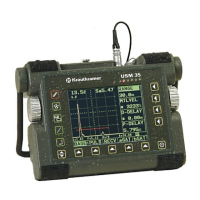
